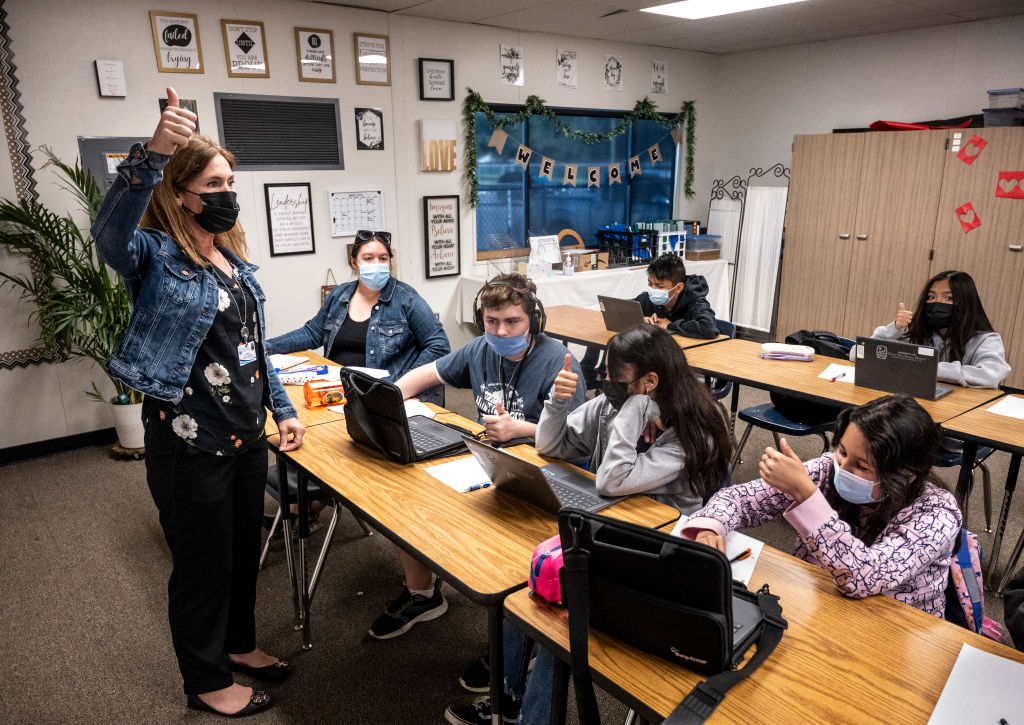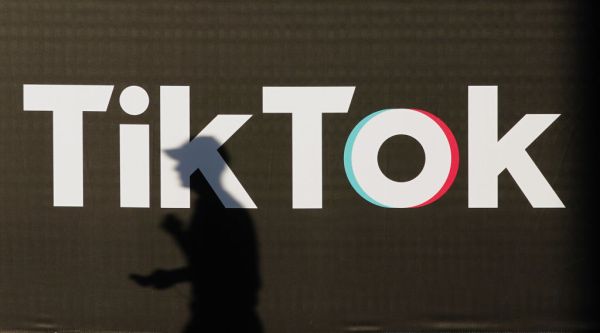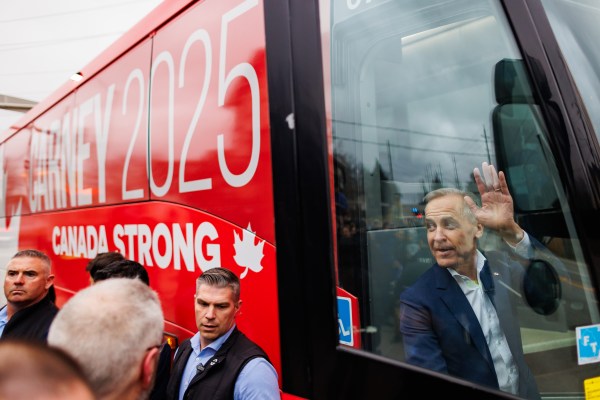Among the trillions of dollars spent on COVID relief, $200 billion went to K-12 schooling. Early rounds of funding weren’t enough to get school systems like New York, Los Angeles, and San Francisco to open their doors—or even to offer full-day remote schooling. That was the case well after it was clear that kids could and should be back in classrooms. In fact, more than 90 percent of the $122 billion earmarked for schools in the 2021 American Rescue Plan remained unspent as of the end of the last school year.
This might suggest that care is warranted when considering the merits of earmarking even more COVID-related funds for K-12 schooling. But the nation’s education researchers beg to differ. Last week, the American Education Research Association (AERA) unfurled a new “study” suggesting that, “$700 billion will be needed to offset COVID-induced learning loss”—$500 billion more than what’s already been spent.
The study, published in Educational Researcher by University of Delaware professor Kenneth Shores and George Mason University professor Matthew Steinberg, uses some impressive-looking math and a lot of hand-waving to lend a “scientific” imprimatur to the education lobby’s demands for more dollars. By imagining some iron-clad relationships between school spending and student outcomes, then plugging in a few cherry-picked examples, Shores and Steinberg promise that spending an extra $350 billion to $1.4 trillion on schooling will remedy learning loss. (If you’re wondering about where the $700 billion figure came from, it’s kind of in the middle of that range.)
It’s worth noting just how much America’s school systems are already spending. This year, Chicago Public Schools is spending $29,000 per student. And yet the 2021 Illinois Report Card found that just one-in-four high school juniors could read or do math at grade level. New York City and Washington, D.C., each spent more than $30,000 per pupil in 2020, and that was before they shed students and received federal COVID relief.
These are staggering sums. But not all that surprising. In 2019—before the pandemic and the funding that accompanied it—the U.S. was spending more than $16,000 per K-12 student. Even after accounting for inflation, that was double what the U.S. spent per student in the early 1980s.
So, back to Shores and Steinberg’s impressive-sounding “Fiscal federalism and K–12 education funding: Policy lessons from two educational crises.” To figure out how much schools need, they rely on complicated measurements of cellphone clustering, try to estimate how many days schools were closed, and toss in some correlations between test performance and spending after the Great Recession (in the spirit of full disclosure, I should note that I’m director of education policy studies at the American Enterprise Institute and that Shores and Steinberg based some of their calculations on data from AEI’s widely-used Return-to-Learn tracker). They try to draw an ironclad relationship between spending and outcomes, then use all this to guess how much post-pandemic recovery should cost.
There’s nothing wrong with this kind of exercise, in theory. The problem is treating this like a scientific certainty rather than the advocacy-cum-guesswork that it is. For instance, the idea that spending another $10 billion on national defense will necessarily make us 3 percent safer is a pretty obvious exercise in folly. How much those dollars help with national security will depend on what’s done with them. Similarly, the idea that anyone can determine precisely how much police spending will eliminate violent crime in the U.S. would be characterized as right-wing tomfoolery—not as science to be touted by influential research associations.
Meanwhile, as my AEI colleague Nat Malkus (the creator of the Return-to-Learn tracker) has noted, the estimates provided “don’t mesh with the rapid progress already seen in some states. In Tennessee, Texas, and Mississippi”—relatively low-spending states—“spring 2022 test scores in reading almost bounced back to pre-pandemic levels, and test scores in math saw significant progress as well.” It turns out that student progress is driven by expectations, practices, and pedagogy—not just money.
While Shores and Steinberg preface their analysis with half-hearted caveats (including an acknowledgment that there’s no evidence that emergency aid has been spent effectively), they quickly leave those behind. Instead, they proceed in the blind assumption that spending another $500 billion will deliver predictable benefits, seemingly without regard to how it’s spent.
Of course, at one level the authors say the money should be spent on good things. They quite like tutoring, for instance (as do I). But nothing in their calculations takes into account how money is spent and there is nothing about their conclusion that’s contingent on how those funds are spent. So, while they probably don’t think billions for pensions is a swell idea, that’s a pretty predictable consequence of their analysis and recommendations.
Are they concerned that the nation’s schools spent more than $10,000 in retirement costs per education employee in 2020, an outlay that doesn’t boost learning and is a benefit ratio that vastly exceeds the private sector norm? Does it matter that school systems like Los Angeles are spending a third of their budget on employee health and retirement benefits rather than classroom instruction, or that school pension costs grew 275 percent from 2001 to 2020—a rate nearly four times the rate at which salaries increased? Would it alter Shores and Steinberg’s predictions if new billions were spent padding pensions, funding ineffectual trainings, or purchasing goofy materials? In each case, it appears the answer is: No.
Economists have made the case for economic stimulus during recession by talking about the merits of simply dropping bundles of cash from a helicopter. Shores and Steinberg seem to have taken that from colorful metaphor to policy prescription.
More troubling still is that Shores and Steinberg urge that extra dollars be targeted to the school systems that were closed longest. While it makes sense that students in those districts would have suffered the worst learning loss and as such need the most help, their proposal means rewarding the very districts where unions bullied administrators and feckless leadership failed to do their jobs over the past few years. Rewarding irresponsibility hardly makes for promising policy.
In the end, this kind of research mostly serves to illustrate just why public goodwill toward K-12 schools and “science” has, in many quarters, curdled into distrust over the past few years. This is an advocacy agenda dressed up in the garb of research that will only further erode public confidence in science—and public schooling. And all in the name of funneling new dollars to school districts that refused to do the job when given the chance.






Please note that we at The Dispatch hold ourselves, our work, and our commenters to a higher standard than other places on the internet. We welcome comments that foster genuine debate or discussion—including comments critical of us or our work—but responses that include ad hominem attacks on fellow Dispatch members or are intended to stoke fear and anger may be moderated.
With your membership, you only have the ability to comment on The Morning Dispatch articles. Consider upgrading to join the conversation everywhere.